A recent video that was posted on YouTube by PBS Eons, may just be the answer many of us have always wondered about. It’s the question that has been asked each and every time someone cleans a litter box. As we scoop the poop, we often wonder just how have we domesticated cats? I mean clearly, as the video also says, “we let them poop in our house”. And we believe we domesticated them?! 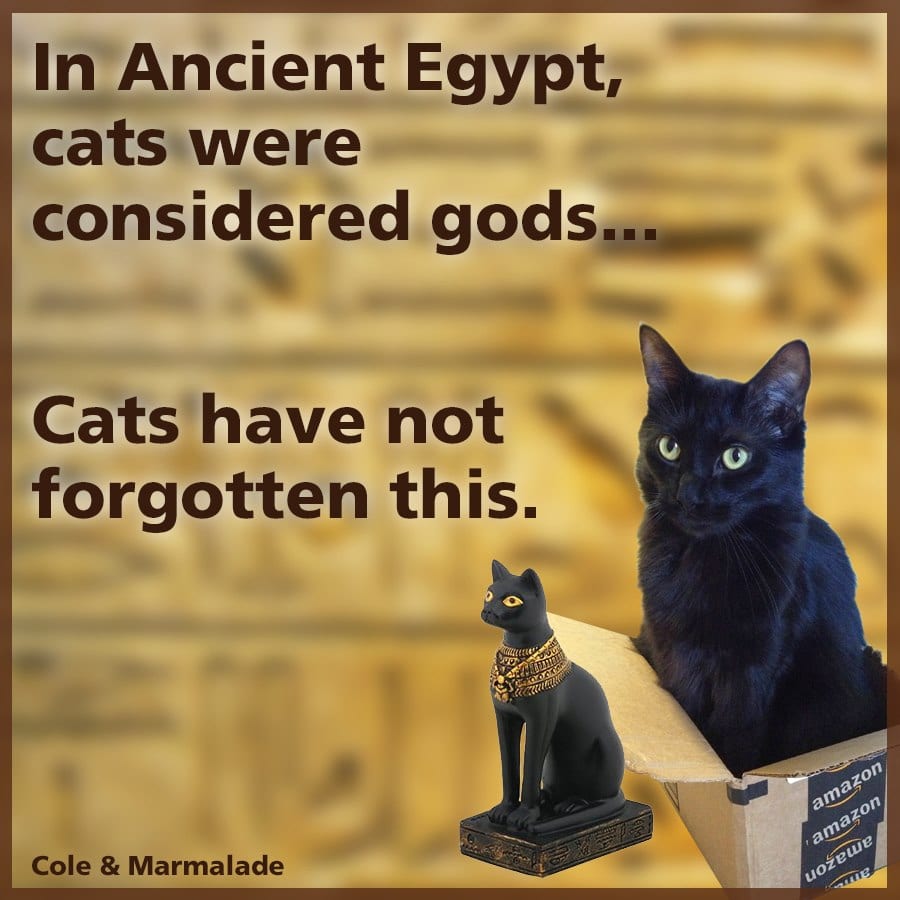
However it happened and whenever we domesticated cats, our lives have been better for it.
But to appease those with a scientific or investigative mind, they want more. They want details. If we can follow human ancestry back hundreds and thousands of years, surely we can see when cats became companions. We’ve seen them alongside the ancient Egyptians dating as far back as ca. 3100 BC–ca. 2900 BC.
Cats were praised for killing venomous snakes and protecting the Pharaoh since at least the First Dynasty of Egypt.
Mafdet was the first known cat-headed deity in ancient Egypt. During the First Dynasty 2920–2770 BC, she was regarded as protector of the Pharaoh’s chambers against snakes, scorpions and evil. She was often also depicted with a head of a leopard (Panthera pardus).[8][9] She was particularly prominent during the reign of Den.[10]
The deity Bastet is known from at least the Second Dynasty 2890 BC onwards. At the time, she was depicted with a lion (Panthera leo) head. Seals and stone vessels with her name were found in the tombs of the pharaohs Khafra and Nyuserre Ini, indicating that she was regarded as protector since the mid 30th century BC during the Fourth and Fifth Dynasties.[11] A wall painting in the Fifth Dynasty’s burial ground at Saqqara shows a small cat with a collar, suggesting that tamed African wildcats were kept in the pharaonic quarters by the 26th century BC.[12]
But when French archaeologists landed on the island of Cyprus in 2001, they were greeted by a large clowder of “domesticated cats”.
Now, when they say large…they mean an estimate of 1.5 MILLION cats, both strays and pets! To put that into perspective, there are about 1.2 Million people on the island. But they choose to focus on the fact that Cyprus is an ISLAND. Meaning the cats didn’t just appear there. So just how and when were they brought to the island?
Mapping the area, the closest body of land is Turkey, roughly 70 kilometers–or just over 43 miles. And as they laughingly put in the video, “If you’ve ever tried to give a cat a bath, you know that most of them aren’t big fans of water”.
But it was when they were working on excavating the site of an ancient civilization, that they found something very interesting.
The site was discovered in 1934 by Porphyrios Dikaios, director of the Cyprus Department of Antiquities who carried out six excavations between 1934 and 1946. His initial findings were published in The Journal of Hellenic Studies in 1934.Further excavations were then held in the early 70’s but were interrupted by the Turkish invasion of the island. A French mission under the direction of Alain Le Brun resumed excavation of the site in 1977. It was occupied from the 7th until the 4th millennium BC.
Their discovery was a grave of a man who’d passed away long, long ago. He lay surrounded by burial offerings that included, “flint tools, seashells and an 8-month-old cat”. The thing that made this find even more surprising though, was that it dated back to about 9,500 years ago.
That’s 4,000 years before the ancient Egyptian felines were noted to have roamed alongside their human companions!
Certainly the fact that his cat was entombed with him would suggest a close bond? I just don’t want to believe the cat was euthanized when the owner passed; but perhaps they passed together in a tragedy. Either way it’s sad, but this is a more humane and comforting thought. However, now everything we knew of felines and their domestic history was in question.
This project was headed by Dr. Andrew Kitchener, a Zoologist at the National Museums of Scotland, who writes, “This shows that the origin of domestic cats was not Ancient Egypt – which is the prevailing view – but Mesopotamia and that it occurred much earlier than was thought. The last common ancestor of wildcats and domesticated cats lived more than 100,000 years ago” (Derbyshire).
The video explains that today’s cats belong to a species referred to as Felis Catus, traced back to a wildcat species called Felis Silvestris.
One of these subspecies, the Felis Silvestris Lybica, is the direct ancestor of all domesticated cats today. And the wild cats, called African cats, can be found across North Africa and Southwest Asia. With slight size differences and coloring patterns, they still look remarkably similar to their ancestors.
But how did we go from the ancient wild cats to the domesticated cats we share our lives with today?
Again, the video certainly was done by humans that have personal relationships with cats. Because they start by reminding everyone that it takes cats a long time to decide to do something. Think of a dog learning to “sit” vs. trying to get a cat to do it. They may both learn quickly, but you have to convince the cat that sitting was their idea. And it’s the best idea ever thought up.
They continue on to address what “domestication” really entails, and when it’s considered successful. Humorously I may add too!
A species is considered to be domesticated when it becomes genetically and permanently modified through human influenced breeding. And it has to be reliant on humans on some level, like for food and shelter. Or to clean out the litter box.
Dr. Melinda Zeder, has a theory that there are 3 paths to domestication.
Why listen to her? Here’s her title: Senior Scientist Emeritus in the Department of Anthropology of the National Museum of Natural History, Smithsonian Institution. Just saying.
The Prey Pathway, where humans domesticated their prey for the ease of the hunt. Goats and cattle are examples of these types of domesticated animals.
The Directed Pathway, is when people use lessons learned from previous attempts of domestication, often through the Prey Pathway. These include what they call “beasts of burden”; horses, donkeys and camels. Humans fast-tracked their domestication to utilize them for transportation and carrying heavy loads.
The Commensal Path, is when wild animals follow humans because they are attracted to their food supplies. They go where the people go! Scraps from meals, mice and rats all likely kept them in close proximity to humans. And I know I’m always grateful when our family cats find the creepy crawlers that find their way indoors!
It’s the commensal path that leads them to believe how cats were domesticated.
Once people realized that the felines weren’t just cute, but handy, they began enticing them to stay. Scientists developed this theory further when they were able to study the isotopic, or dietary, remains of the ancient cats. In China, the remains of a cat from 5,600 years ago were analyzed. They found trace amounts of millet, an ancient seed originally found in Africa and northern China. Today, millet is still a staple of almost 1/3rd of the world.
This suggests the cats were eating the mice that were feeding on stored millet. No doubt a useful service to the villagers.
Physically, as cats became more domesticated, they’ve become slightly smaller than their wild ancestors. This also led to unique and never before seen variations in coat patterns and colors. They speculate THIS was where the introduction of a new tabby patterns and calico cats emerged!
By the 19th century, it’s believed that people began breeding cats based on these new colors. Because it’s not enough to just happily accept the love of a deserving cat. You have to have it match your favorite jacket or some other ridiculous reason. 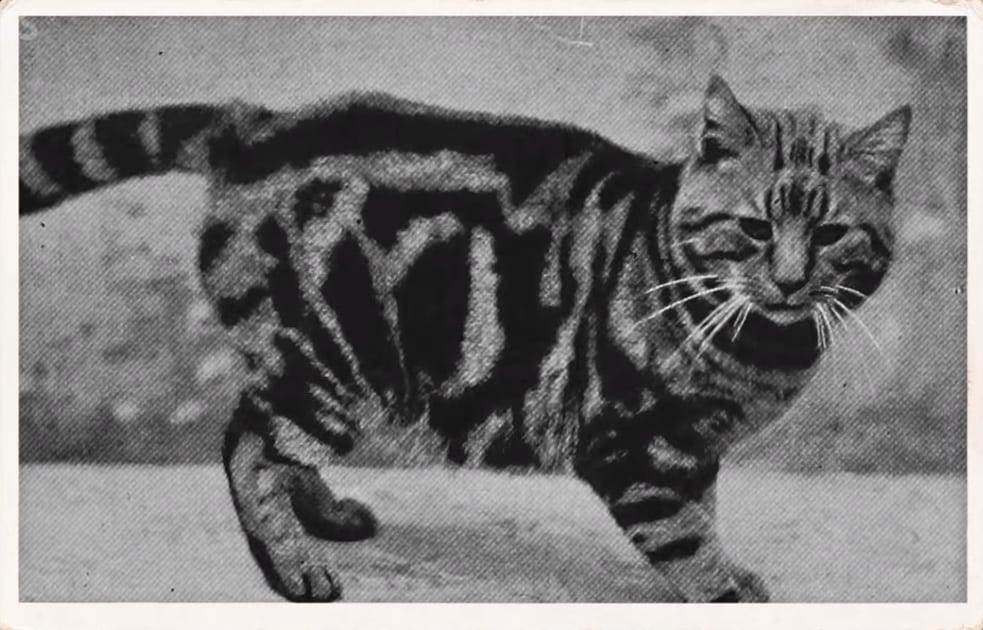
No matter the color of their fur, cats have retained closer purrsonality traits to their wild lineage, than other domesticated animals have. Specifically, these are traits related to their dietary and reproduction habits. And guess what probably caused this? Continued breeding of the more domesticated felines with surrounding wild cats. TNR–Trap/Neuter/Return would have nipped that right in the bud!
Wild cats are also thought to have been domesticated twice.
The first occurred in Southwest Asia about 10,000 years ago. The second, our more familiar history of the Egyptian cats, occurring about 3,500 years ago. It is at this age, that the now evolved humans allowed their art, sculptures and lives become “catified”. These cats were eventually brought to Rome by early Greek settlers and through Rome and Egypt trade growth. They still cannot confirm HOW these cats ended up on the island of Cyprus all those years ago though.
The main theory here is that about 11,000 years ago, humans migrated from Southwest Asia began travelling to Europe. They brought the ancestral feline subspecies with them. So it’s likely at least TWO of them made it to the island. And we all know that’s how babies are made. Literally, if just one female and one male cat were left on the island, an unchecked population could become overwhelming. Oh wait! That’s what’s now happening on Cyprus, where cats are considered an “infestation”. And who’s fault is that?
Now the overall population of felines on the Earth is immeasurable. Estimates are close to 600 MILLION! 
I won’t go into all the details here, because I’ll talk cats all day–obviously. But please be sure to watch the video to learn all about the domestication of these gorgeous creatures. In my opinion, they’ve certainly domesticated humans on a MUCH larger scale!
“And yes, even though we let them poop inside our houses and knock stuff off our counters and…pee in the laundry basket for some reason, we did domesticate them. Even though it might not always feel like it.”
https://www.youtube.com/watch?v=CYPJzQppANo&fbclid=IwAR0qkKvwl5tRkJPBn5Zg4IsMomeZw8ytTpw9LW4wxpPVm0r1GM2trmtJnq8
REMEMBER: SPAY/NEUTER, FOSTER, VOLUNTEER, TNR & AS ALWAYS, ADOPT, DON’T SHOP!
Related Story: New DNA Test Just For Cats Can Unlock Your Feline’s Breed History
Related Story: The World History Of Black Cats Bringing GOOD LUCK!


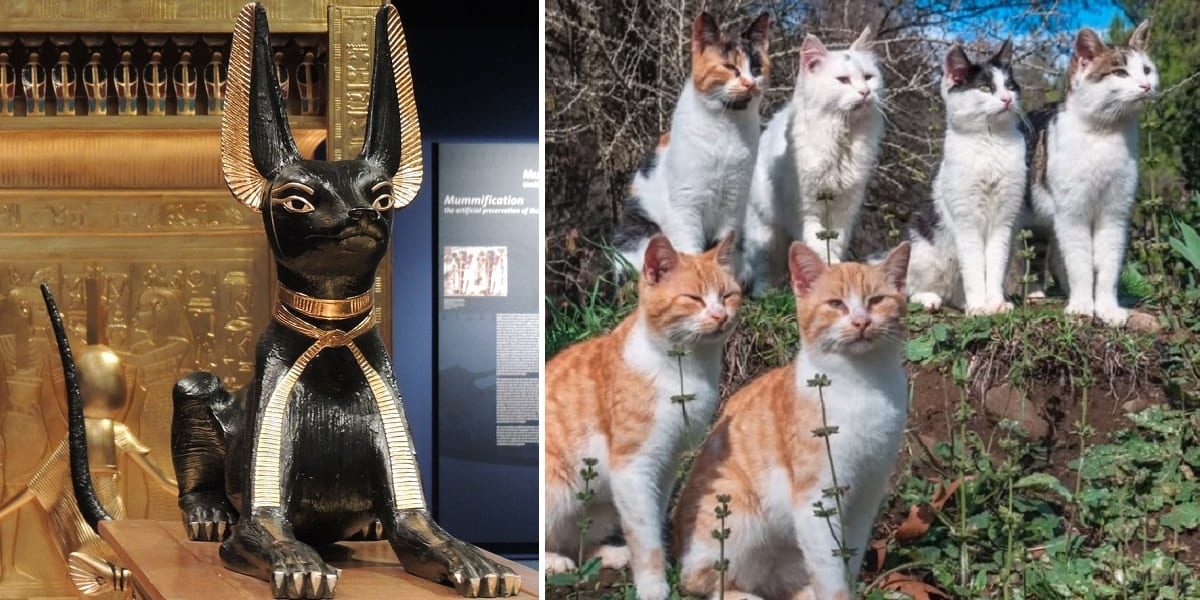



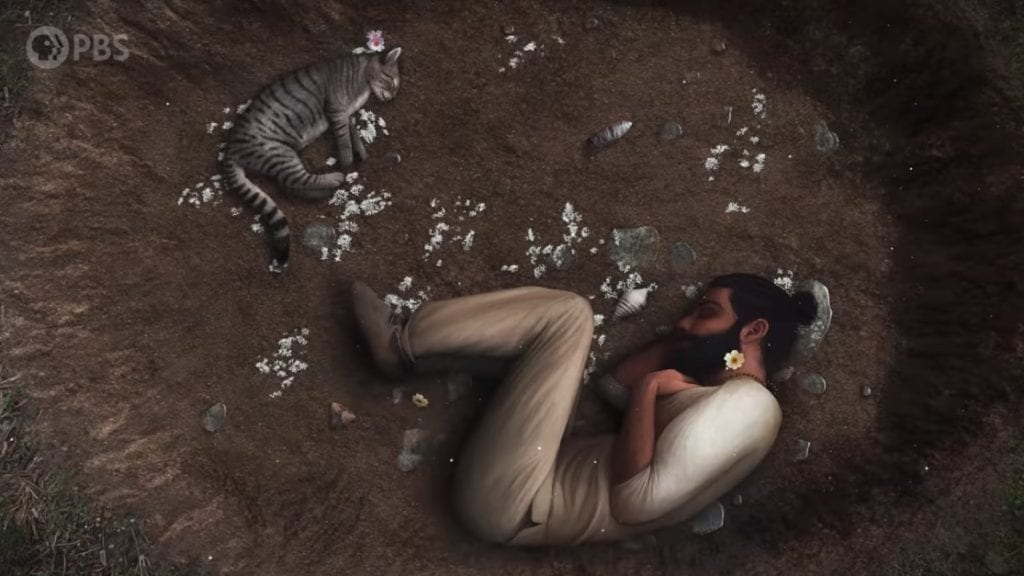


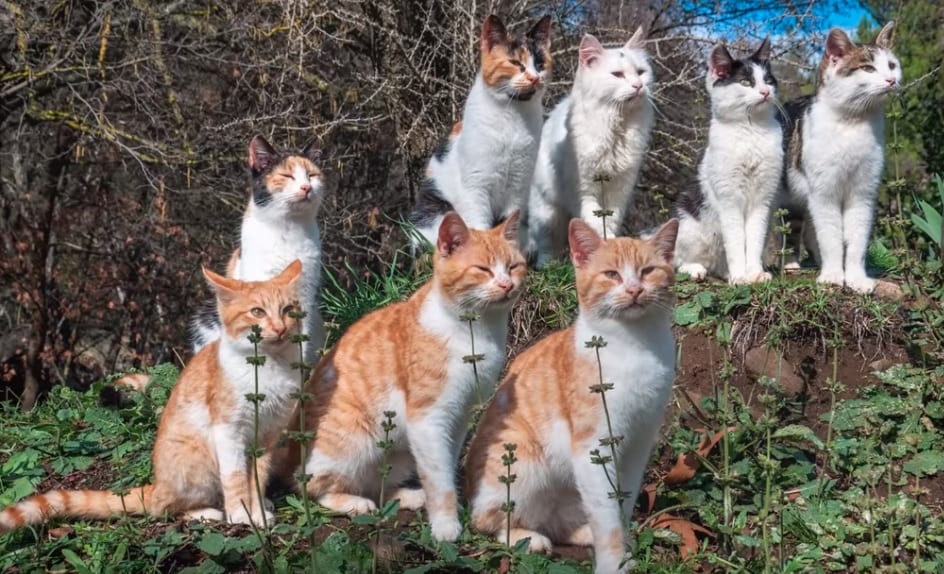


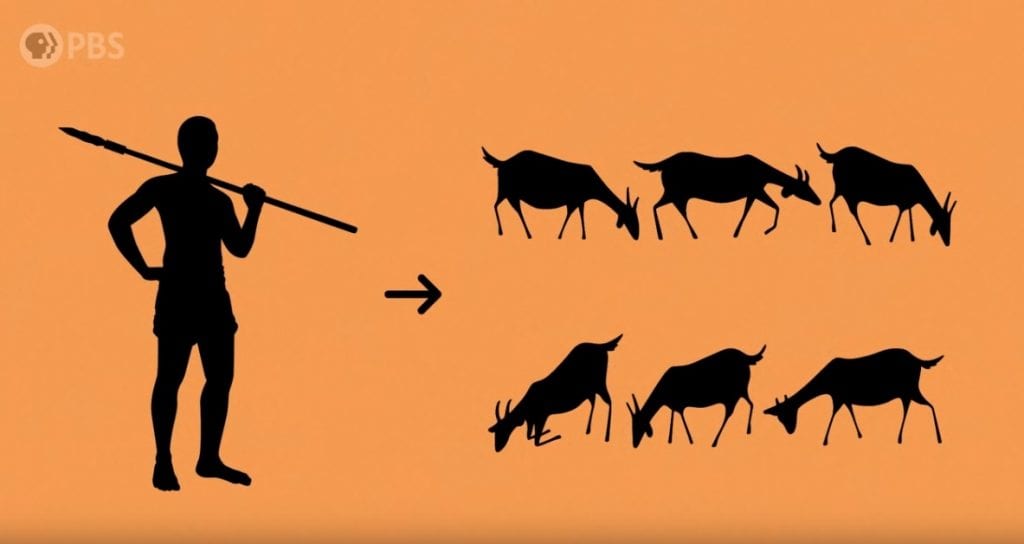





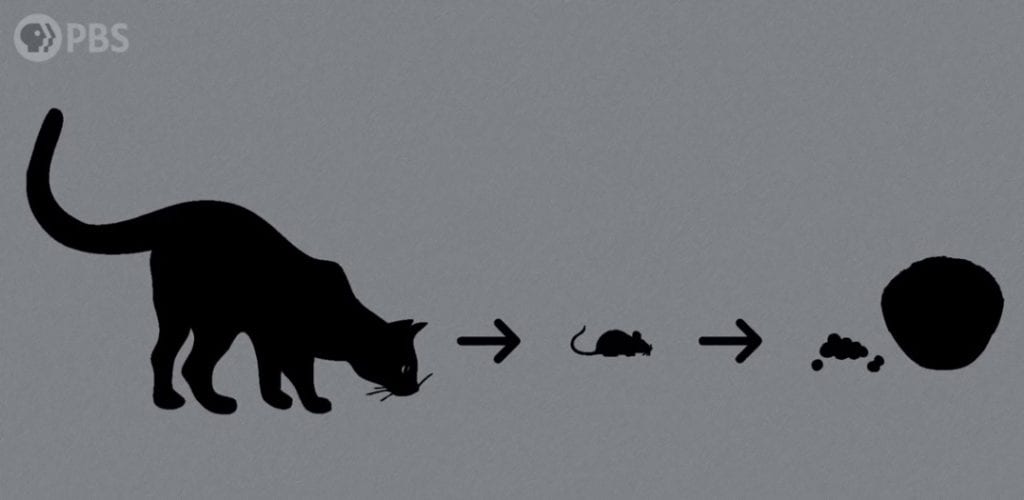





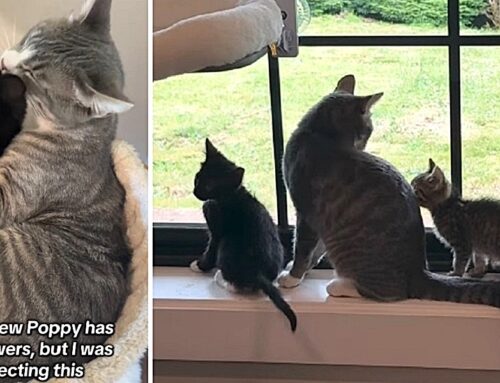




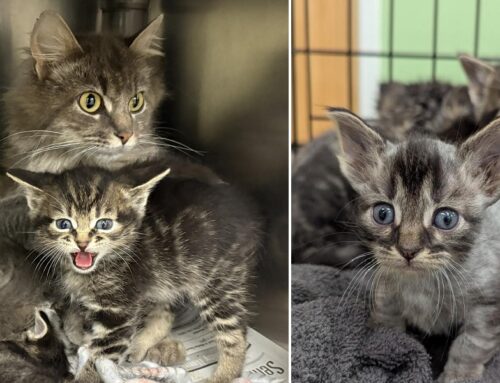
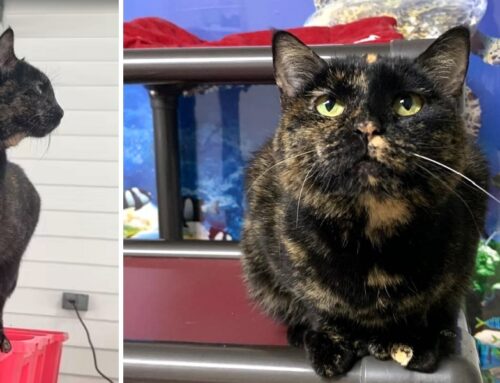
Leave A Comment